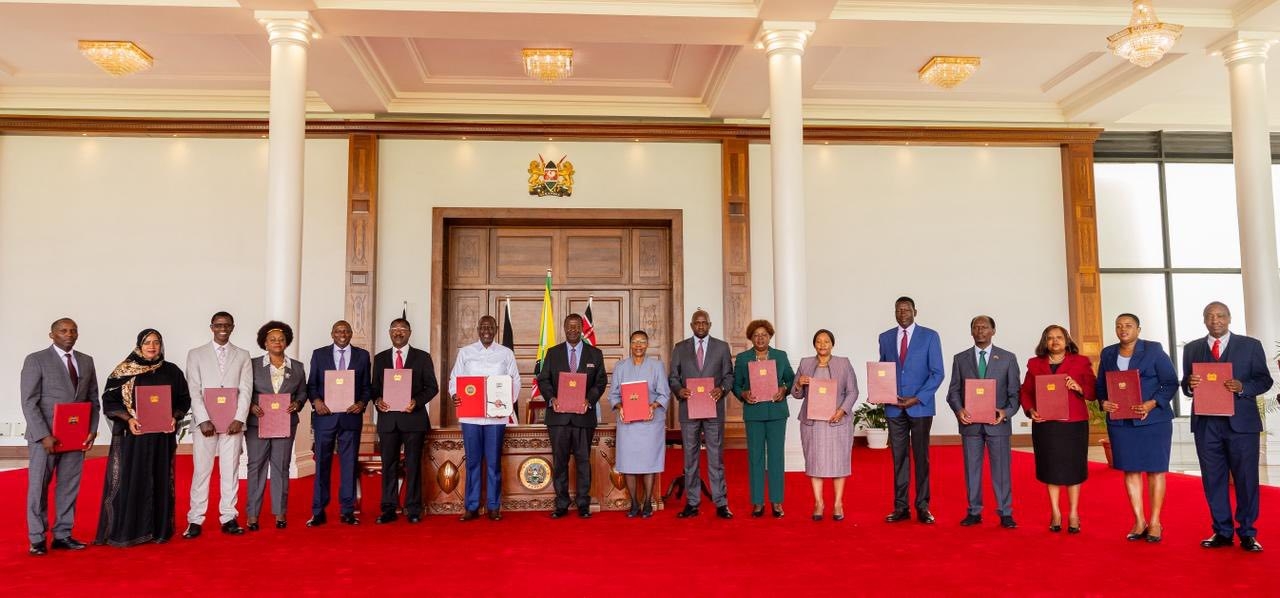More than 300 Kenyans lost their lives and properties worth Sh124.15 billion was destroyed during the March -May flooding that hit the country, an agency has said.
The National Development Implementation Committee, headed by the Prime Cabinet Secretary Musalia Mudavadi, said government assessment has pieced together the numbers and concluded that the floods resulted in 315 fatalities across the 47 counties.
In fulfilling its mandate of overseeing the implementation of all national government programmes, policies and projects, the team said it received and deliberated on reports of the National Integrated Post Disaster Management Assessment on Floods and budget Summary for the financial year 2024-25.
It was also appraised on the austerity measures, zero fault audit outstanding issues raised by the Auditor General for all ministries, departments and agencies, foreign economic diplomatic visits and summits and revised guidelines on framework for coordination and supervision of government operations.
Though short of details, the statement summarising the outcome of the Thursday meeting puts to rest speculation on how many lives were lost and value of properties destroyed.
“NDIC observed that the March-May 2024 floods resulted in 315 fatalities and caused damage amounting (Sh)124.15 billion across all sectors in 47 counties,” the statement said.
It says that the subsectors most affected by the flooding include roads, which saw properties worth ShS37.56 billion destroyed, cooperatives (Sh20 billion), environment and climate change (Sh6.98 billion) and basic education (Sh12.94 billion).
A total of 55,010 households and 410,437 persons were affected by the calamity, it said.
As an intervention to enhance disaster preparedness, the lot directed all “Principal secretaries to review the Report on Nature, Extent and Impact of Floods and share feedback with National Government Coordination Secretariat within Seven days for input before being escalated to Cabinet for adoption and implementation.”
And in the light of the downsized budget for the new financial year, committee ordered that budgets for key agencies and departments be rationalised to reflect reality and the austerity measures.
“NDIC noted that the Government has rolled out austerity measures across all MDAs [and] as a result, [it] adopted the Measures proposed by the National Treasury to whittle down the recurrent budget by Sh35.7 billion and Sh133.5 billion for Development Budget.”
And to enhance combating corruption, the statement said, the NDIC directed PSs to ensure heads of accounts in all departments and state entities complete all financial statements by August 10 and that PSs must attend audit entry meetings to ensure reduction of wastage in public penalties, fines and legal consequences, which take away resources from development.
Further, while noting that All State Departments had established Corruption Prevention Committees Chaired by the Principal Secretaries in Person, it said, “the committee directed that Each State Department commit to sensitize Staff on ethics, integrity and anti-corruption, undertake Corruption risk assessment and mitigation plan and provide All and any relevant information and documentation to EACC and any other investigative Agency investigating corruption cases or matters.”
And to better document and oversight the projected being implemented, the lot said it “resolved to relook at Private Public Partnership Directorate with a view of analysing existing projects and how they have been processed and performing to make it effective and efficient in delivery of services.”












